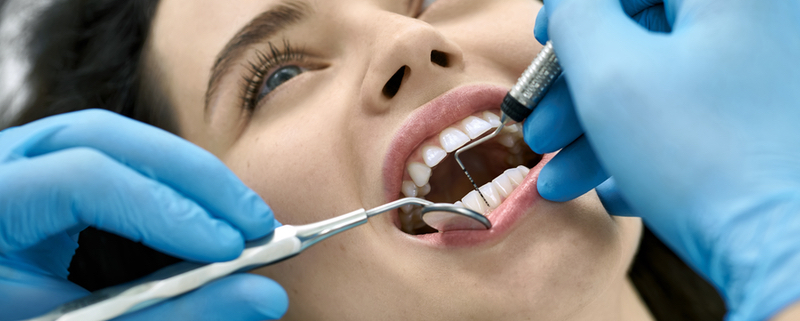Why We Do Dental Probing
Have you ever wondered why your dentist or hygienist is poking around at your gums? What he or she is doing is checking the depth of gum tissue pockets that are surrounding your teeth. Probing is a proactive way to identify your risk for gum disease and to possibly catch it early. Probing and charting is one of the hygienists’ most important tools for determining the condition of your gums and the type of cleaning you need for best oral health.
What do you use to measure these pockets?
Dental probing is done by using a tool called a dental probe to measure the depth of a tooth’s socket. The dental probe acts as a ruler with markings along its side in millimeters (mm). To measure the depth of your tooth’s pocket, the dentist or hygienist will gently place the probe into the pocket (loose gums between the tooth and gums) and take note of the measurements. Six measurements are taken per tooth, three along the outside by your cheek and three along the inside by your tongue.
What are healthy readings for pockets?
A depth of 3mm or under without any bleeding is generally accepted as a healthy pocket.
What happens if I have deep probing pockets?
Above the 3mm pockets, your dentist or hygienist may suggest a more thorough cleaning which goes deeper under the gums to remove bacteria trapped that a general cleaning might not get. These deep cleanings are called periodontal scalings. These particular cleanings are broken up into 4 quadrants of the mouth so the hygienist can focus on one area at a time for the cleaning outcome. If the probing numbers reach above 5mm to 10mm, your dentist will most likely refer you to a periodontist for gum treatment.
Can deep pockets be reversed?
Yes! If caught early. Between your dental visits at the office and most importantly your home health care, pockets can be managed and treated with positive outcomes. Flossing is always a MUST to keep the small spaces between your teeth and gums clean.
Periodontal probing has gotten a bad rap for being tedious and time-consuming but provides valuable information the hygienist can use to help motivate better home care and overall oral health. The periodontal probe allows evaluation for gum disease severity, progress in healing and the best results for a great therapeutic effort.




